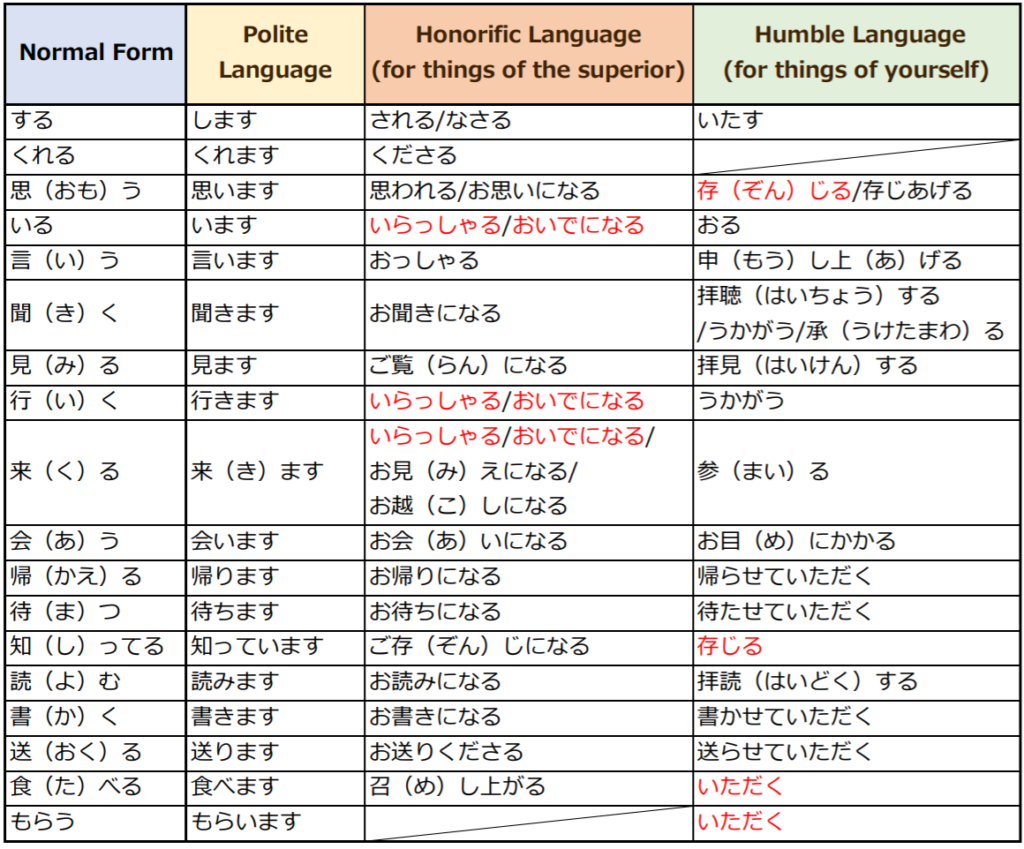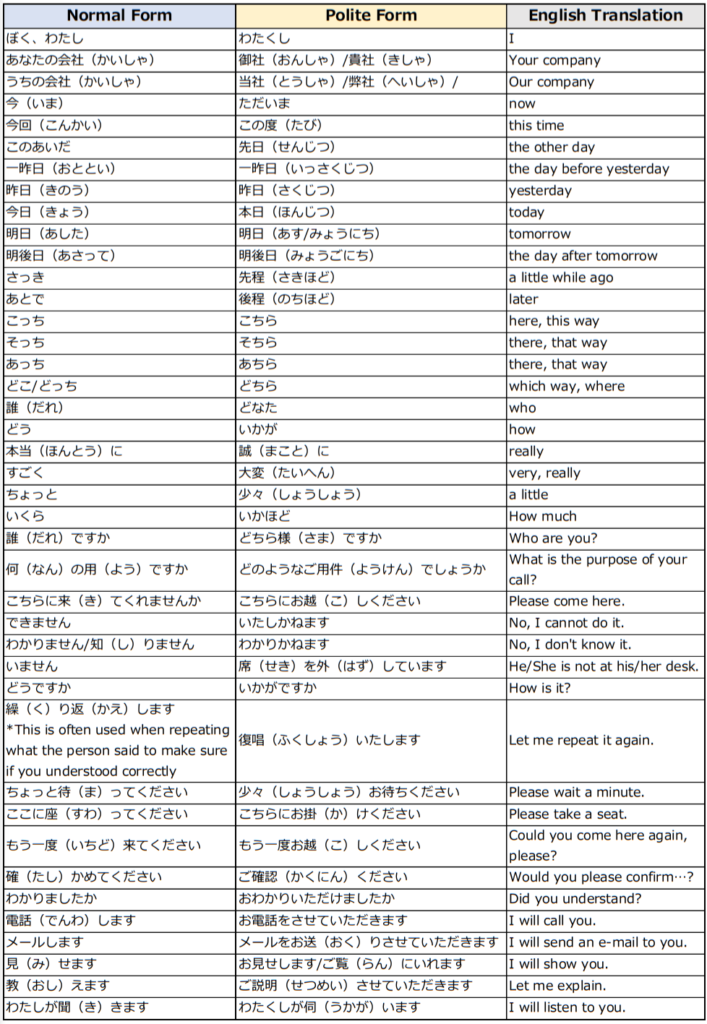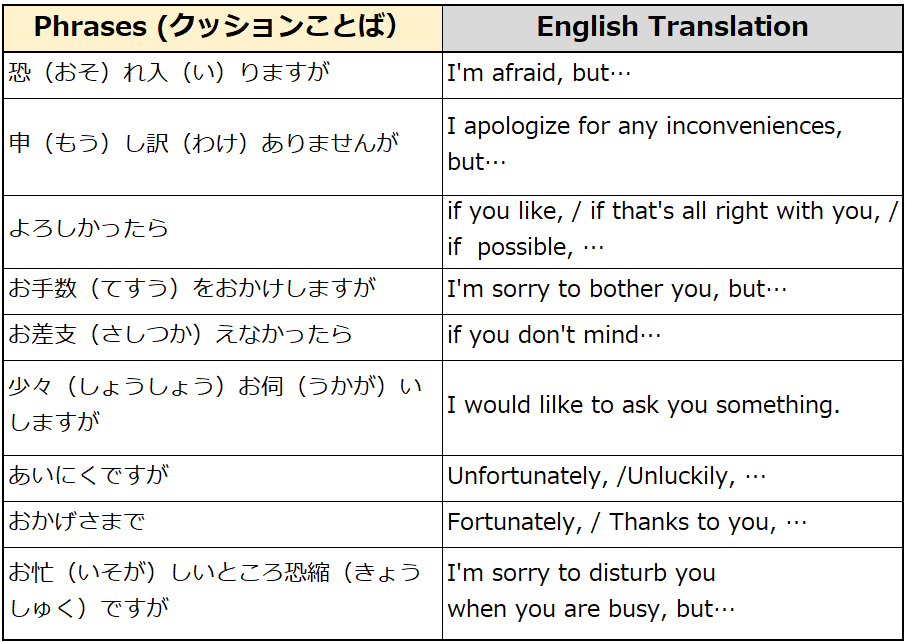The important keigos to remember

Polite form other than Verbs

Helpful phrases to soften awkward topics
Sometimes you would feel uneasy when refusing someone’s request, apologizing for not being able to do something, or asking someone for help. To make communication go smoothly, you can add one phrase at the beginning of the sentence.

Expression to be used carefully
- Don’t say the titles such as “xx課長(かちょう)”, “xx部長(ぶちょう)” or “xx社長(しゃちょう)” with another title at the same time.
NG: 社長(しゃちょう)さん、吉田(よしだ)部長(ぶちょう)様(さま)
OK: 社長(しゃちょう)、吉田(よしだ)部長(ぶちょう) - Don’t mention the name of your co-workers with a title.
NG: 田中(たなか)社長(しゃちょう)がお世話(せわ)になっております。
OK: 田中(たなか)がお世話(せわ)になっております。 - 「~れる」「~られる」are not necessarily honorific language.
NG: 先生(せんせい)が来(こ)られました。
OK: 先生(せんせい)がいらっしゃいました。 - Don’t say 「ご苦労(くろう)様(さま)です」 to the superior.
That is inappropriate expression when speaking to your boss. Instead of this, you should say 「お疲(つか)れ様(さま)です。」 - Use affirmative sentences rather than negative sentences.
NG: 明日(あした)でないと、できません。
OK: 明日(あした)になれば、できます。
The content of this time is very advanced, so please don’t worry if you think it difficult to use those keigo in the normal business life. The best way of practicing is getting used to it gradually. Good luck !!

















